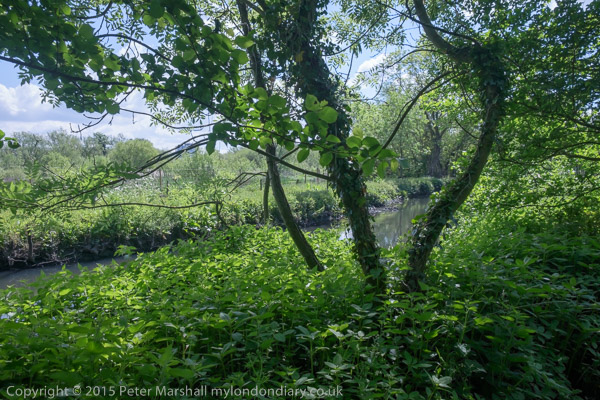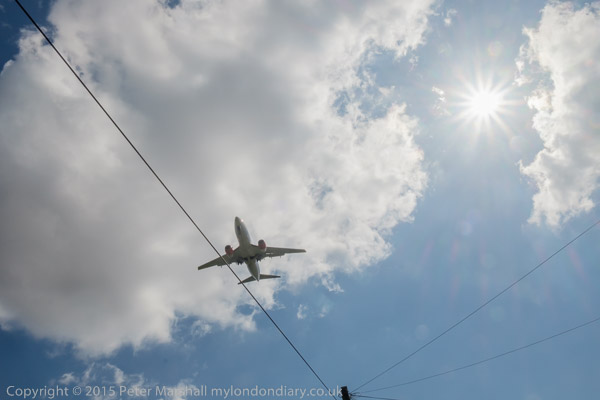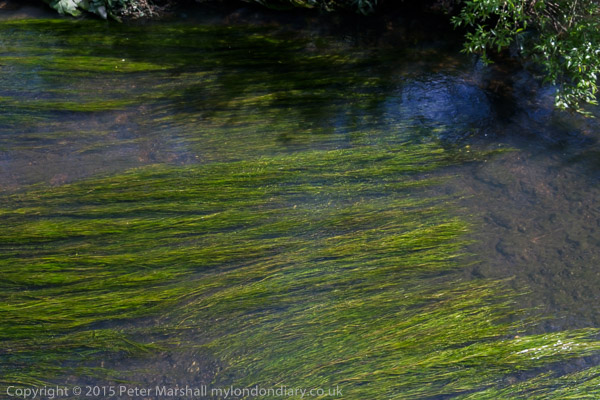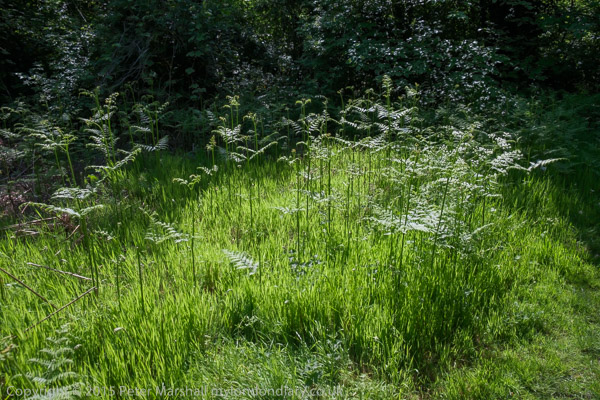
The River Crane became famous in 1949 with the formation of the Crane River Jazz Band, the real fount of Trad Jazz in this country. It all took place very close to where I was living, but since I was only four at the time I knew nothing about it.
Like me, trumpeter Ken Colyer was living in Hounslow and got together with a few mates, including Monty Sunshine and Lonnie Donegan to play together away from everywhere in the park on the the banks of the river so as not to annoy the neighbours, and finally decided they were good enough to play at the local pub, the White Hart pub in Cranford, where they set up a jazz club. The pub is no more, and probably just as well as it would be hard to listen to music there now as the jets come in and out of Heathrow at rooftop level. Though presumably those who now frequent the KFC and Starbucks that replaced it either wear headphones or have had their hearing permanently impaired by their use.
Fortunately the rehearsals didn’t take place a mile or so further south, or it might have been called the Duke of Northumberland’s RIver Jazz Band which wouldn’t have slipped so easily off the tongue. Though they could have been the Crown and Sceptre Jazz band but that sounds far too English as well.
 A wide-angle can make the planes seem quite small
A wide-angle can make the planes seem quite small
The Crane runs along a short distance the east of Heathrow, and the pleasure of this walk was considerably diminished by the deafening noise of large flying machines threatening to land on top of us every minute or two. Fortunately none actually dropped short out of the sky during our passage.
I got plane spotting out of my system early, standing out in our back garden in the days when planes had large registration letters on the lower surface of their wings and crossing them off in my book, probably produced by Ian Allan publications, another local business just a few hundred yards from the suburban home to which J G Ballard moved a few years later. But seeing them go over so close is rather disturbing, as they do sometimes seem a little precariously Heath Robinson. Thinks did occasionally drop off in our back garden back in the old days, but fortunately missed all of us.
We began and ended our walk at Hatton Cross, right at the edge of the airport, and stayed on to have a meal in the Green Man, which still looks like the country pub it used to be, and inside the noise of the aircraft is not too noticeable over the general background of a busy pub.

I played in the Crane as a child, paddled and fished and failed to swim. Played too in the woods and ruins and trenches of Hounslow Heath. When I grew older it was time for a little Chemistry, and we made bombs to attempt to destroy the remains of the gunpowder mill close to Baber Bridge, in what where then known to all as the ‘Crown and Sceptre’ woods. I’ve no idea where people got the name now used, Donkey Wood from – it certainly wasn’t called that in my youth. The Crown and Sceptre is no more either, transmogrified into a Tesco Express.
Fortunately I wasn’t injured in those explosions, and the damage to the massive concrete blocks was pretty superficial, though we did often come home bleeding from falling out of trees or sledding down gravelly slopes on sheets of corrugated iron or other abandoned rubbish. Kids definitely were tougher in those days, and our parents would all now have their children taken away be social services for the freedom we all took for granted.
It wasn’t the first time I’d been back – most of the riverside we walked along is now on the London Loop, and where we had to squelch in deep mud there are now raised walkways. Wear good earplugs and it makes a pleasant day out in a little country inside London. You can walk most of the way to the Thames close to the river if you have time.

The Crane is something of a mystery, which most sources avoid by stating it runs from somewhere near North Hyde Road in Hayes to the Thames at Twickenham, the lower third or so of a river that gathers water from a large area of Middlesex, and is known for most of its course as the Yeading Brook. Its name in the lower course comes from Cranford, which got its name from the flocks of heron – cranes – that used to live around the ford on the Bath Road. The source of the Yeading Brook seems to be just to the north of the Kodak Sports ground at the back of the houses on Pinner Park Lane, just to the west of the Kodak factory at Headstone Drive, Harrow. It used to provide the water for the moat of Headstone Manor.
But there are many small streams that contribute to the river (which used to be called the Fishbourne, certainly back in AD 704, possibly for obvious reasons.) Though many of them are largely now culverted, and it is hard to trace the course .
______________________________________________________
There are no adverts on this site and it receives no sponsorship, and I like to keep it that way. But it does take a considerable amount of my time and thought, and if you enjoy reading it, a small donation – perhaps the cost of a beer – would be appreciated.
My London Diary : Buildings of London : River Lea/Lee Valley : London’s Industrial Heritage
All photographs on this and my other sites, unless otherwise stated, are taken by and copyright of Peter Marshall, and are available for reproduction or can be bought as prints.
To order prints or reproduce images
________________________________________________________